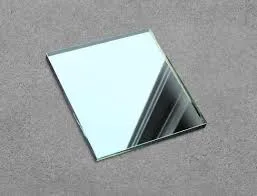

Different Types of Low-E Glass A Comprehensive Overview
Low-emissivity (Low-E) glass is a type of energy-efficient glazing material, which has been designed to minimize the amount of infrared and ultraviolet light that comes through the glass without compromising the amount of visible light that is transmitted. Low-E glass plays a crucial role in modern architecture and building design, helping to enhance energy efficiency, comfort, and sustainability. This article will explore the different types of Low-E glass, how they work, their applications, and their benefits.
What is Low-E Glass?
Low-E glass is coated with a microscopically thin layer of metal or metallic oxide, which reflects thermal radiation while allowing visible light to pass through. This coating can be applied to single, double, or triple-glazed windows. The primary function of Low-E glass is to reduce heat loss during winter and minimize heat gain in summer, ultimately providing a more comfortable indoor environment and reducing energy costs.
Types of Low-E Glass
Low-E glass can be categorized mainly into two types hard coat and soft coat.
1. Hard Coat Low-E Glass Hard coat Low-E glass, also known as pyrolytic Low-E glass, is created by applying a low-emissivity coating to the surface of the glass during the manufacturing process while the glass is still hot. This creates a durable and scratch-resistant surface. Hard coat Low-E glass is particularly effective for solar control as it reflects a significant amount of solar heat and is suitable for exterior applications.
Applications - Commercial buildings, where extreme durability is necessary. - Areas prone to high levels of solar radiation. - Climates where heating cost savings are prioritized.
Benefits - Increased durability and resistance to weathering. - Effective in reducing glare and solar heat gain. - Cost-effective option for large glazing areas.

2. Soft Coat Low-E Glass Soft coat Low-E glass involves applying the coating to the glass while it is cold through a vacuum deposition process. This method yields a more effective and transparent coating that reflects heat back into the building more efficiently compared to hard coat options. However, soft coats are less durable and typically require additional protection, such as being sandwiched between panes of double or triple glazing.
Applications - Residential buildings seeking to optimize indoor comfort. - Buildings in cold climates focused on reducing heating costs. - Structures where aesthetics and clarity of view are paramount.
Benefits - Superior insulation properties and energy efficiency. - Enhanced clarity and visible light transmission. - Offers better thermal control, leading to more stable indoor temperatures.
Low-E Glass Technologies
Low-E coatings can be further classified based on their performance properties such as the Solar Heat Gain Coefficient (SHGC) and Visible Light Transmittance (VLT). The following are some advanced Low-E technologies
1. Dual Low-E Glass This type utilizes two separate Low-E coatings on the glass to maximize performance. One coating can be optimized for winter insulation, while the other is designed for summer solar control.
2. Spectrally Selective Low-E Glass This advanced type of Low-E glass selectively filters different wavelengths of light. It allows visible light to enter while blocking a greater percentage of infrared heat.
Conclusion
Low-E glass represents a significant advancement in energy-efficient building solutions. By understanding the different types of Low-E glass—hard coat and soft coat—along with their unique properties and applications, designers and homeowners can make informed decisions that improve energy efficiency, comfort, and aesthetic appeal. As the demand for sustainable building practices continues to grow, Low-E glass will play an increasingly important role in shaping the architecture of the future, contributing not just to individual comfort but also to broader environmental goals.